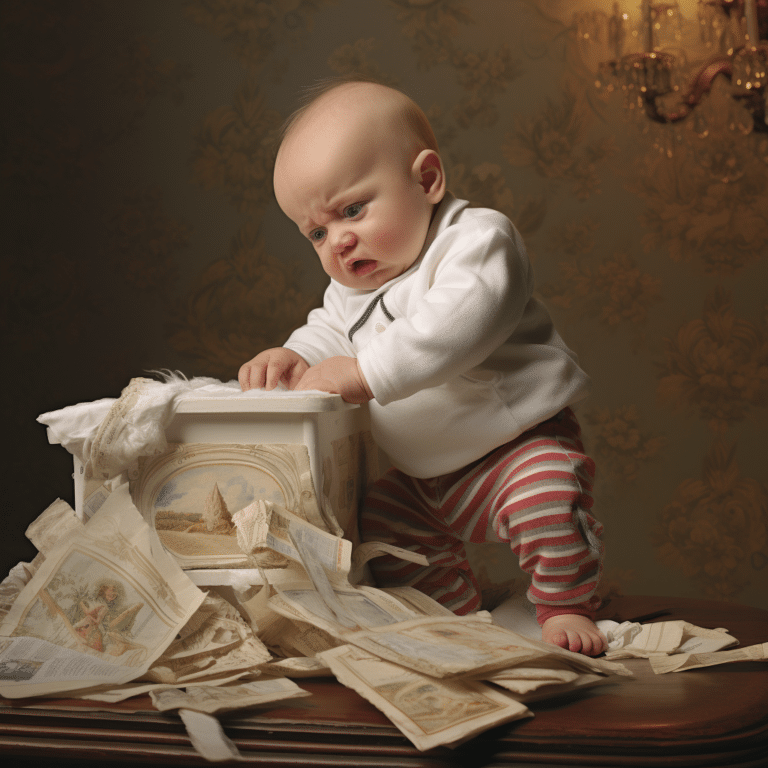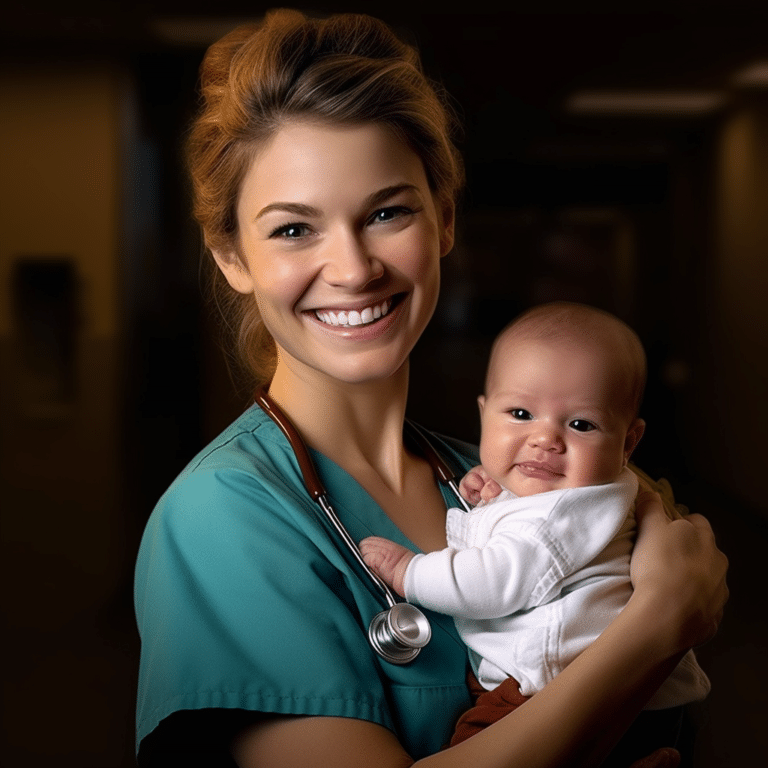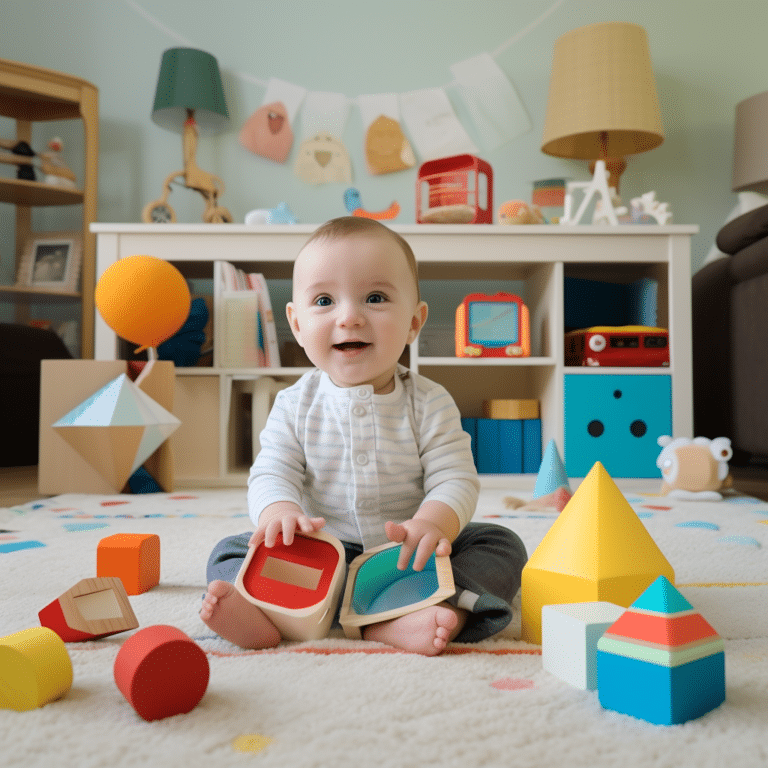Essential Baby Safety Tips for New Parents
Essential Baby Safety Tips for New Parents Becoming a new parent is an exciting time filled with joy and love. Along with this joy comes the responsibility of keeping your precious baby safe. As a new parent, it’s essential to be aware of the potential risks and take necessary precautions to ensure your little one’s safety. Here are some essential tips to help you navigate the world of baby safety:
Key Takeaways:
- Choose a reliable infant car seat and ensure it is installed correctly.
- Avoid distractions while driving and never leave your baby alone in the car.
- Use a slip-resistant infant bathtub and never leave your baby unattended during bath time.
- Create a safe sleep environment for your baby by placing them on their back to sleep.
- Practice proper cleanliness and hygiene during infant feeding.

Infant Car Seat Safety
Ensuring the safety of your baby during car rides is of utmost importance. Here are some essential tips for infant car seat safety, car seat installation, and car seat inspection:
Choosing the Right Car Seat
When selecting a car seat for your baby, opt for one that is age-appropriate and meets safety standards. Consider factors such as your baby’s weight, height, and age to choose the right type of car seat. It’s recommended to use a rear-facing car seat for infants as it provides optimal protection in case of a crash.
Proper Car Seat Installation
Once you have chosen the appropriate car seat, it’s crucial to install it correctly. Incorrect installation can significantly reduce the effectiveness of the car seat in protecting your baby. Follow the manufacturer’s instructions carefully and make sure the car seat is securely fastened. If you’re unsure about the installation, consult a certified Child Passenger Safety Technician for assistance.
Schedule a Car Seat Inspection
To further ensure the safety of your little one, schedule a car seat inspection with a Child Passenger Safety Technician. They can check if your car seat is correctly installed and provide guidance on proper usage. These experts have extensive knowledge about car seat safety and can address any concerns you may have.
| Infant Car Seat Safety Checklist | Status |
|---|---|
| Car seat is appropriate for baby’s age and size | Check |
| Car seat is securely installed | Check |
| Straps are properly adjusted | Check |
| Car seat has not expired | Check |
| No visible damage on the car seat | Check |
“Properly installing an infant car seat is crucial for your baby’s safety during car rides. Seek expert assistance and never hesitate to schedule a car seat inspection to ensure you’re doing everything right.”
By following these guidelines for infant car seat safety, car seat installation, and car seat inspection, you can provide a secure and protected riding experience for your baby.
Baby Safety in the Car
When it comes to keeping your baby safe while on the road, there are a few key things to keep in mind. Avoiding distractions is crucial to ensure your full attention is on driving. Remember, even a split second of taking your eyes off the road can have serious consequences. Consider leaving your purse or cell phone in the back seat to minimize the risk of distraction and help you stay focused.
Another important aspect of baby safety in the car is preventing accidental leaving. It can be easy to become distracted or forgetful, especially with a new baby. Always double-check the back seat before locking the car and walking away. Establishing a routine, such as placing a reminder item in the front seat like a stuffed animal or diaper bag, can help create a habit of checking for your baby’s presence in the car.
By avoiding distractions and implementing strategies to prevent accidental leaving, you can greatly reduce the risk of incidents and ensure your baby’s safety while traveling.
Table: Tips for Baby Safety in the Car
| Tips | Description |
|---|---|
| Avoid distractions | Keep your focus on the road and avoid using your phone or engaging in other activities that take your attention away from driving. |
| Never leave your baby alone in the car | Even for a moment, it’s important to never leave your baby unattended in the car. This reduces the risk of accidents, overheating, or potential abduction. |
| Place a reminder item in the front seat | Establish a routine of checking for your baby before locking the car by placing a reminder item, such as a stuffed animal or diaper bag, in the front seat. |
Following these tips and being proactive in baby safety while driving can give you peace of mind and ensure the well-being of your little one during car journeys.
Baby Bath Time Safety
Keeping your baby safe during bath time is essential to prevent accidents and ensure a positive experience for both of you. By following these tips, you can create a safe environment and enjoy those precious moments of bonding:
Choose a Slip-Resistant Infant Bathtub
Invest in a slip-resistant infant bathtub or use a rubber bath mat inside the tub to prevent your baby from slipping. The textured surface provides extra grip, ensuring their safety while you handle bath time tasks.
Never Leave Your Baby Unattended
It only takes a few seconds for an accident to happen, so never leave your baby unattended in the bathtub. Always stay within arm’s reach and keep a firm hold on them to prevent accidental slips or submersions.
Ensure a Safe Water Temperature
Before placing your baby in the bath, test the water temperature to ensure it is warm but not hot. Use your elbow or a bath thermometer to check that the water is around 100°F (37.8°C) for optimal comfort and safety.
By following these baby bath time safety tips, you can create a secure environment and enjoy a delightful and worry-free bonding experience with your little one.
| Hazards | Prevention Measures |
|---|---|
| Slips and falls | Use a slip-resistant infant bathtub or rubber bath mat |
| Drowning | Never leave your baby unattended |
| Hot water burns | Test the water temperature before placing your baby in the bath |
Baby Sleeping Safety
When it comes to your baby’s sleep, creating a safe sleep environment is of utmost importance. Follow these essential tips to ensure your little one’s safety and reduce the risk of SIDS.
The first step is to always place your baby on their back to sleep. This position has been proven to be the safest and helps reduce the risk of suffocation. Use a firm mattress with a fitted sheet to provide a stable sleeping surface for your baby. Avoid soft bedding, pillows, and stuffed animals in the sleep space, as they can pose a suffocation hazard.
It is also crucial to avoid letting your baby sleep on couches or in seating devices such as swings, car seats, or bouncers. These are not designed for safe sleep and can increase the risk of SIDS. Instead, provide a dedicated and safe sleep area for your baby, such as a crib or bassinet.
Safe Sleep Tips:
- Always place your baby on their back to sleep
- Use a firm mattress with a fitted sheet
- Avoid soft bedding, pillows, and stuffed animals
- Provide a dedicated and safe sleep area
- Keep the sleep environment cool and well-ventilated
- Consider using a pacifier before bedtime
“Creating a safe sleep environment is vital for your baby’s well-being.”
Remember, a safe sleep environment is not only crucial for your baby’s well-being but also for your peace of mind. By following these baby sleeping safety tips, you can help ensure that your little one gets the safe and restful sleep they need for healthy development.
| Safe Sleep Tips | Recommended Practices |
|---|---|
| Place baby on their back to sleep | Reduces the risk of suffocation and SIDS |
| Use a firm mattress with a fitted sheet | Provides a stable sleeping surface |
| Avoid soft bedding, pillows, and stuffed animals | Reduces the risk of suffocation |
| Provide a dedicated and safe sleep area | Minimizes the risk of accidents or falls during sleep |
| Keep the sleep environment cool and well-ventilated | Prevents overheating and promotes comfortable sleep |
| Consider using a pacifier before bedtime | May reduce the risk of SIDS |
Infant Feeding Safety
When it comes to feeding your baby, ensuring their safety is of utmost importance. By following proper cleanliness and bottle-feeding precautions, you can create a safe and healthy environment for your little one.
Keeping it Clean
Before every feeding, make sure to wash your hands thoroughly with soap and warm water. This simple step helps prevent the spread of germs and bacteria. Additionally, clean all feeding equipment, such as bottles, nipples, and breast pump parts, after each use. Use hot, soapy water or a dishwasher to thoroughly clean and sanitize these items.
The Importance of Stored Milk
If you’re using stored breast milk or formula, it’s crucial to follow proper storage guidelines. Breast milk can be stored in clean, sterilized bottles or breast milk storage bags in the refrigerator for up to four days. Frozen breast milk can be stored for up to six months in a deep freezer. Always label your stored milk with the date to ensure freshness.
Bottle-Feeding Precautions
Whether you’re using breast milk or formula, it’s essential to practice safe bottle-feeding techniques. Avoid propping the bottle, as it can increase the risk of choking and aspiration. Instead, hold your baby during feedings to ensure they can control the flow of milk and reduce the risk of overfeeding. Additionally, always check the temperature of the milk or formula before feeding to prevent burns.
| Bottle-Feeding Do’s | Bottle-Feeding Don’ts |
|---|---|
|
|
By prioritizing cleanliness, following safe storage guidelines, and practicing bottle-feeding precautions, you can ensure that your baby’s feeding experience is both nourishing and safe.
Baby Toy Safety
Ensuring the safety of your baby’s toys is crucial for their well-being and development. Choosing age-appropriate toys and eliminating potential choking hazards are essential steps to protect your little one. Here are some important tips to keep in mind:
- Choose age-appropriate toys: Select toys that are suitable for your baby’s age and developmental stage. Look for labels indicating the recommended age range and make sure the toys match your baby’s abilities and interests.
- Inspect for small parts: Before giving a toy to your baby, thoroughly inspect it for small parts that could pose a choking hazard. Check for loose buttons, detachable parts, or anything that could easily break off and be swallowed.
- Safe materials: Opt for toys made of non-toxic materials, such as BPA-free plastic or natural materials like wood. Avoid toys with sharp edges, rough surfaces, or any potential harmful chemicals.
Remember, your baby’s safety should always be the top priority when it comes to choosing and using toys. Regularly inspect and clean their toys, and never leave your baby unattended while playing. By following these guidelines, you can provide a safe and enjoyable play environment for your little one.
| Age Group | Suitable Toys | Potential Choking Hazards |
|---|---|---|
| 0-6 months | Sensory toys, rattles, soft stuffed animals | Small detachable parts |
| 6-12 months | Stacking toys, shape sorters, soft books | Small pieces, buttons, beads |
| 1-2 years | Push and pull toys, building blocks, musical instruments | Small parts, batteries, magnets |
| 2-3 years | Puzzles, art supplies, pretend play sets | Small accessories, sharp edges |
Table: Age-appropriate toys and potential choking hazards
Preventing Baby Choking
As a parent, one of our top priorities is keeping our babies safe, and preventing choking incidents is crucial. Babies are naturally curious and tend to explore their surroundings by putting things in their mouths. It’s essential to be aware of potential choking hazards and take proactive measures to keep our little ones safe.
Here are some common potential choking hazards to be aware of:
- Small objects such as coins, buttons, or small toy parts
- Foods that can easily get stuck in their throats, like grapes, hot dogs, or popcorn
- Loose or broken parts from toys or other objects
- Small magnets that can be swallowed
To prevent choking incidents, it’s important to create a baby-proof environment. Make sure that small objects are kept out of reach and that toys are age-appropriate and free from small parts that can be easily detached. Regularly inspect toys for loose or broken parts, and discard any damaged toys immediately.
In addition to creating a safe environment, it’s essential to be prepared for emergencies. Consider getting certified in infant CPR, which can provide you with the necessary knowledge and skills to respond effectively in case of a choking incident. Knowing how to perform CPR on an infant can be a lifesaver.
Remember, prevention is key when it comes to baby choking. Stay vigilant, educate yourself about potential choking hazards, and take proactive measures to keep your little one safe. By being proactive and prepared, you can minimize the risks and create a safe environment for your baby to explore and grow.
Table: Common Potential Choking Hazards
| Potential Choking Hazards | Tips |
|---|---|
| Small objects | Keep small objects out of reach and ensure toys are age-appropriate. |
| Foods | Avoid giving choking hazards foods such as grapes, hot dogs, or popcorn. |
| Loose or broken toy parts | Regularly inspect toys for loose or broken parts and discard damaged toys. |
| Magnets | Keep small magnets out of reach to prevent accidental swallowing. |
Conclusion
As we celebrate Baby Safety Month, I want to emphasize the importance of creating a safe environment for your little one. Being a new parent can be overwhelming, but by following these essential tips, you can ensure your baby’s safety and give yourself peace of mind.
Remember, every parent and baby is unique, so trust your instincts and seek support when needed. Don’t hesitate to reach out to your healthcare provider or join parenting communities to get advice and share experiences with other new parents. Together, we can navigate this exciting journey of parenthood while keeping our babies safe.
Thank you for taking the time to prioritize your baby’s safety. By implementing these baby safety tips, you are setting the foundation for a secure and protected environment for your little one. Happy Baby Safety Month to all new parents!
FAQ
How do I choose the perfect car seat for my baby?
When choosing a car seat, consider your baby’s age, weight, and height. Look for a seat that is appropriate for their size and meets safety standards. Refer to the car seat manufacturer’s guidelines for installation and usage instructions.
How can I ensure my baby’s car seat is installed correctly?
It’s crucial to follow the car seat manufacturer’s installation instructions carefully. If you’re unsure, schedule a car seat inspection with a Child Passenger Safety Technician who can guide you on proper installation techniques.
What should I do to prevent distractions while driving with my baby?
As a parent, it’s important to stay focused on the road. Avoid distractions such as texting or engaging in other activities that take your attention away from driving. Consider leaving your purse or cell phone in the back seat to minimize the risk of accidentally leaving your baby in the car.
What are some important safety tips for baby bath time?
Use a slip-resistant infant bathtub to prevent your baby from slipping. Keep the water at a safe temperature to avoid burns. Never leave your baby unattended in the tub, and always drain the tub immediately after bath time.
How can I create a safe sleep environment for my baby?
It’s crucial to place your baby on their back to sleep to reduce the risk of SIDS. Use a firm mattress with a fitted sheet. Avoid letting your baby sleep on couches or in seating devices. Keep loose blankets and other soft items out of the sleep space, and consider using a pacifier before bedtime to reduce the risk of SIDS.
What precautions should I take during infant feeding?
Ensure cleanliness by washing your hands before feedings. Follow proper storage guidelines for breast milk or formula to maintain its safety. Avoid propping the bottle and be mindful of your baby’s intake to prevent choking hazards.
How can I ensure my baby’s toys are safe?
Choose age-appropriate toys for your baby and regularly inspect them for loose parts or sharp edges. Check for small parts that could pose a choking hazard, and opt for toys made of safe materials. Keep toys stored safely when not in use.
How can I prevent choking incidents with my baby?
Get down to your baby’s level and remove small items that could be dangerous. Consider taking a certified infant CPR class to be prepared for emergencies, including choking incidents.
How can I ensure my baby’s safety during diaper changes?
Always keep one hand on your baby while they are on the changing table to prevent falls. Use safety straps if available. Keep all diapering supplies within reach to avoid leaving your baby unattended.
What should I keep in mind during Baby Safety Month?
Baby Safety Month serves as a reminder for new parents to prioritize their baby’s safety. By following the essential tips mentioned, you can create a safe environment for your little one. Trust your instincts and seek support when needed.







